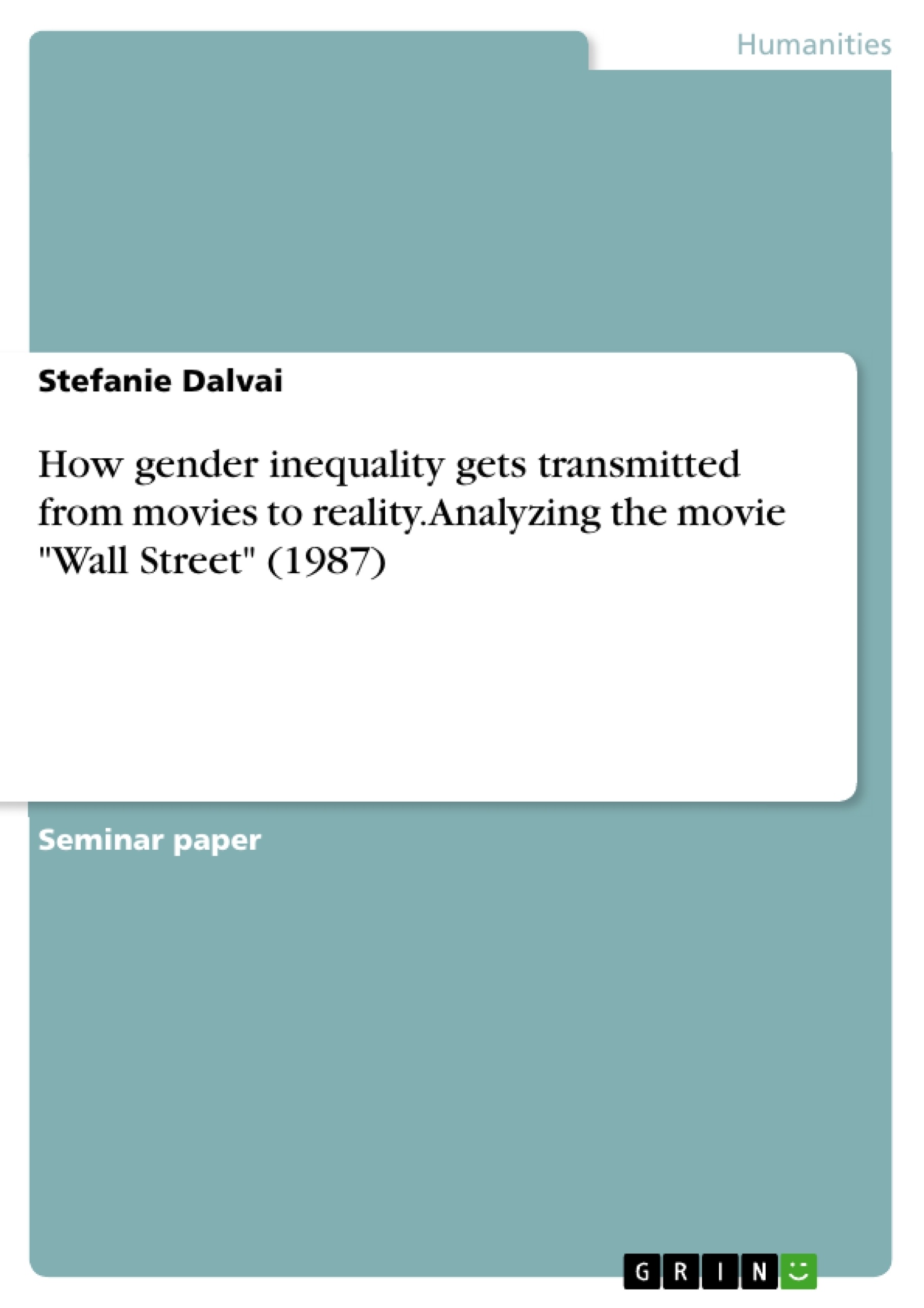The aim of this research paper is to prove that movies have a great influence on how women and men see themselves in real life and that they reinforce gender difference by stereotyping the characters. It will be further suggested that these seemingly superficial differences do indeed make damages in real life.
Humankind has always tried to improve in every possible sector. That is how ideals and standards came into being and are still held up today. These ideals reflect our collective thoughts and capture the Zeitgeist of the era and place we live in. Because of that, being American, as for being Italian or Chinese, has a certain connotation to it. A certain architype of man and a certain one of woman has also been transmitted from one generation to the other. This is best displayed in movies, as it is one of the propagandistic tools which shows to the world the face of the own nation. Therefore, the essence of what it means to be manly or womanly in America was transmitted through the actors/actresses from the early stages of Hollywood filmmaking.
Not only do movies “seemingly” represent our reality, our desires and thoughts but it, first and foremost, creates those desires. Humans are of an imitative nature and will copy whatever they see and take, for example, films as an unchangeable reality. Furthermore, as we are talking about short film sequences and not everyday life, it is difficult to reach the standards which are displayed in movies, as for clothing, money, looks and behavior. This will lead to people getting really influenced by movies and consequently frustrated when they realize that the ideals cannot be easily reached.
First, a definition of gender in general and the different nuances of manliness and womanliness will be given, following a chapter about how we underestimate the power which movies exert over our lives. In a brief section it will be explained how gender differences were portrayed in movies, from the beginning of Hollywood cinema till the making of “Wall Street” (1987). To round out the topic with a good example, the film “Wall Street” of the year 1987 will be analyzed, looking at the gender stereotypes that leak out. Last but not least, a light will be shed on the real life situation in Wall Street around that time and nowadays, focusing on the gender inequality that reign in this working space.
Inhaltsverzeichnis (Table of Contents)
- Introduction
- What is gender
- The Power of Media
- From the early cinematographic stages till „Wall Street “
- Wall Street
- The Film Analysis
- Masculinity
- Women in "Wall Street"
- Gender Equality in real life Wall Street
- Conclusion
Zielsetzung und Themenschwerpunkte (Objectives and Key Themes)
This research paper aims to demonstrate the significant influence of movies on how women and men perceive themselves in real life. It explores how films reinforce gender differences through stereotyping characters, ultimately suggesting that these superficial differences contribute to real-world inequalities, such as unequal job distribution.
- The impact of movies on gender perception
- The role of stereotyping in reinforcing gender differences
- The connection between film representations and real-world inequalities
- The concept of gender as a social construct
- The historical and cultural influences on gender roles
Zusammenfassung der Kapitel (Chapter Summaries)
- Introduction: This chapter introduces the topic of American ideals and how they are portrayed in Hollywood cinema, specifically focusing on the representation of gender roles. It discusses the impact of movies on shaping societal perceptions and the potential for them to perpetuate gender inequalities.
- What is gender: This chapter distinguishes between sex and gender, explaining how gender is a social construct that has historically been used to define and separate men and women. It explores the learned nature of gender roles and the consequences of conforming to societal expectations.
- The Power of Media: This chapter emphasizes the powerful influence of media, particularly movies, on shaping our understanding of the world and influencing our behavior. It argues that films not only reflect our reality but also contribute to creating it.
- From the early cinematographic stages till „Wall Street “: This chapter briefly examines the portrayal of gender differences in movies from the early days of Hollywood cinema up to the release of the film "Wall Street" (1987).
- Wall Street: This chapter analyzes the film "Wall Street" (1987), focusing on the gender stereotypes presented in the film. It explores how these stereotypes contribute to the perpetuation of unequal gender roles in real-life situations.
Schlüsselwörter (Keywords)
This research paper focuses on the key topics of gender inequality, media influence, film analysis, gender roles, social construction of gender, stereotyping, and real-world implications of film representations. The film "Wall Street" is used as a case study to examine the specific portrayal of gender differences and their impact on the working environment.
- Quote paper
- Stefanie Dalvai (Author), 2016, How gender inequality gets transmitted from movies to reality. Analyzing the movie "Wall Street" (1987), Munich, GRIN Verlag, https://www.grin.com/document/455925



